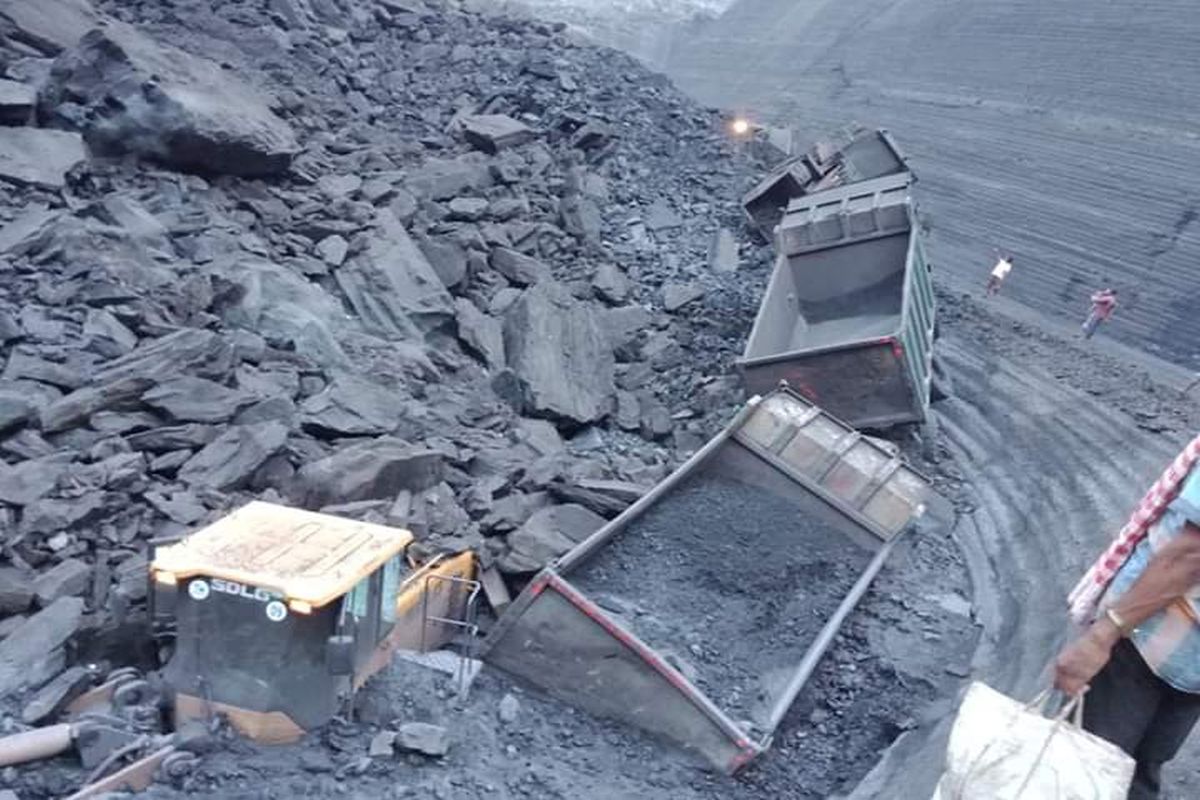The tragic coal mine explosion in northern China’s Shaanxi province’s Yan’an city, killing 11 miners and injuring many in a gas explosion few days ago, shed light on nation’s ongoing reliance on coal as an energy source. This explosion stands as the deadliest occurrence since the collapse of an open-pit mine in Inner Mongolia earlier this year, which resulted in over 50 casualties.
Unmindful of its pledge to peak emissions by 2030 and reach net zero by 2060, and in 2021 the president, Xi Jinping, promised to stop building coal powered plants abroad, China continues to go ahead with coal projects and coal mining, merrily ignoring its adverse impact on the climate and human health.
The blast occurred on the outskirts of the historic city of Yan’an, an area deeply rooted in mining activities. Mining accidents are not uncommon in China, where the industry safety regulations can be poorly enforced. In December 2020, 23 miners died after a carbon monoxide leak at a coal mine.
In September 2020, 16 workers were killed at another mine on the outskirts of Chongqing, also due to carbon monoxide. In December 2019, an explosion at a coal mine in Guizhou province, south-west China, killed at least 14 people. China suggested that the safety in mines has improved in recent decades, as has media coverage of major incidents, many of which were once overlooked. But accidents like this still occur frequently due to inadequate safety training, lax regulation, official corruption, and profit-driven motives.
As many as two-thirds of deaths in China’s coal mines between 2001 and 2018 were caused by gas either igniting, causing rock to give way, or suffocating people, according to government statistics. Geological and economic factors make the problem worse. Methane concentrations tend to increase with depth. As a result, open-cut mines have fewer problems — but more than 80% of China’s coal mines are underground pits. With surface deposits exhausted, depths are
now increasing by 8 meters to 25 meters every year. The deepest coal pit descends nearly a mile (1.6 kilometers) below the surface.
Underground mines are also more dangerous in the event of an explosion, providing a confined space and unstable surroundings to maximize the effect of any blast. Those dangers accelerate as mines are worked harder and corners cut to achieve output targets, as has been happening in China since a power crisis caused rolling blackouts in 2021.
According to Baker institute titled Coal to Power China’s energy transition published in Forbes magazine in April 2022, China started mining more coal than ever to ensure reliable supply and avoid power outages like 2021 power crisis in winter. In 2021, China’s coal production reached a record high of 4 billion tonnes, accounting for half of the global output. In addition, the average age of China’s coal fleet is only 14 years old, with at least two decades of life before retirement.
According to latest analysis by the Global Energy Monitor (GEM) and the Centre for Research on Energy and Clean Air, China has openly defined the government’s plans and the state of the world
and unveiled more coal projects, Even as the northern hemisphere reels under the devastating impact of climate change during the summer of 2023,
GEM and the CRECA analysis stated that China is approving new coal power projects at the equivalent of two plants every week, a rate energy watchdogs say is unsustainable if the country hopes to achieve its energy targets.
According to these bodies, China started a domestic spree of approving new projects in 2022 and restarting suspended ones in 2022 after regional power crunches. Last year, the government approved a record-breaking 106 gigawatts (GW) of new coal-fired power capacity. One gigawatt is the equivalent of a large coal power plant.
This run of approvals is continuing, potentially on track to break last year’s record, analysts said that unless permitting is stopped immediately, China won’t be able to reduce coal-fired power capacity during the 15th five-year plan (2026–30) without subsequent cancellations of already permitted projects or massive early retirement of existing plants.”
Why China is going ahead with coal projects?
China is the world’s biggest carbon emitter, contributing almost a third of the world’s greenhouse gases in 2020. UN figures showed that in terms of population size and number of environmental disasters, it is also extremely vulnerable to the impacts of the climate crisis. In its 14th five-year- plan, which ends in 2025, China’s government committed to reducing the latter by 65%, and raised the share of renewable fuels in primary energy consumption from 20% to 25%.
While Chinese leadership, including President Xi Jinping, has advocated for enhanced safety measures, mining operations often prioritize profit over safety, with local authorities sometimes overlooking such practices. According to Forbes article, China is actively pushing forward all options, from nuclear and hydro to natural gas and renewables. But, in all cases, coal will remain significant in China’s energy mix for years to come, as none of those can replace coal today as the national power engine just yet. And 2060 is far enough to bet on technology improving the odds to become carbon neutral, China seems to be willing to play those odds.

Leave a Reply